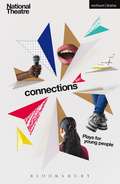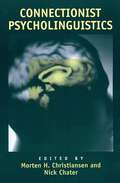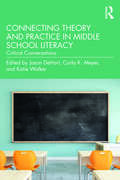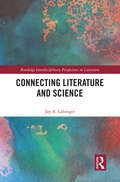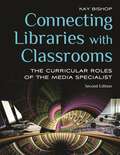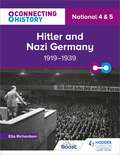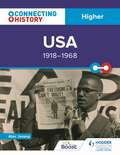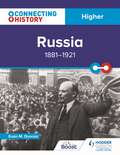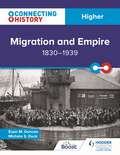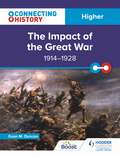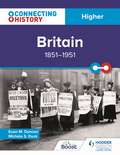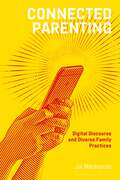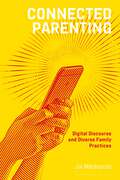- Table View
- List View
Connections 500: Blackout; Eclipse; What Are They Like?; Bassett; I'm Spilling My Heart Out Here; Gargantua; Children of Killers; Take Away; It Snows; The Musicians; Citizenship; Bedbug
by Snoo Wilson Simon Armitage Jackie Kay Patrick Marber Mark Ravenhill Bryony Lavery Frantic Assembly Davey Anderson James Graham Katori Hall Carl Grose Stacey Gregg Lucinda Coxon Rufus NorrisDrawing together the work of 12 leading playwrights, this National Theatre Connections anthology celebrates highlights from 21 years of the Connections festival with a retrospective selection of plays. Featuring work by some of the most prolific playwrights of the 20th and 21st centuries, and together in one volume, the anthology offers young performers between the ages of 13 and 19 an engaging selection of plays to perform, read or study.Each play has been specifically commissioned by the National Theatre's literary department over the years, with the young performer in mind. In 2016, these plays were then performed by approximately 500 schools and youth theatre companies across the UK and Ireland, in partnership with multiple professional partner regional theatres at which the works were showcased. The anthology contains all 12 of the play scripts; notes from the writer and director of each play, addressing the themes and ideas behind the play; and production notes and exercises for the drama groups.This year's anniversary anthology includes plays by Snoo Wilson, Gary Kemp and Guy Pratt; Simon Armitage; Jackie Kay; Patrick Marber; Mark Ravenhill; Bryony Lavery & Frantic Assembly; Davey Anderson; James Graham; Katori Hall; Carl Grose; Stacey Gregg; and Lucinda Coxon.
Connectionist Psycholinguistics (Non-ser.)
by Morten H. Christiansen Nick ChaterSetting forth the state of the art, leading researchers present a survey on the fast-developing field of Connectionist Psycholinguistics: using connectionist or neural networks, which are inspired by brain architecture, to model empirical data on human language processing. Connectionist psycholinguistics has already had a substantial impact on the study of a wide range of aspects of language processing, ranging from inflectional morphology, to word recognition, to parsing and language production.Christiansen and Chater begin with an extended tutorial overview of Connectionist Psycholinguistics which is followed by the latest research by leading figures in each area of research. The book also focuses on the implications and prospects for connectionist models of language, not just for psycholinguistics, but also for computational and linguistic perspectives on natural language. The interdisciplinary approach will be relevant for, and accessible to psychologists, cognitive scientists, linguists, philosophers, and researchers in artificial intelligence.
Connectionist Natural Language Processing: Readings from Connection Science
by NoelSharkeyConnection science is a new information-processing paradigm which attempts to imitate the architecture and process of the brain, and brings together researchers from disciplines as diverse as computer science, physics, psychology, philosophy, linguistics, biology, engineering, neuroscience and AI. Work in Connectionist Natural Language Processing (CNLP) is now expanding rapidly, yet much of the work is still only available in journals, some of them quite obscure. To make this research more accessible this book brings together an important and comprehensive set of articles from the journal CONNECTION SCIENCE which represent the state of the art in Connectionist natural language processing; from speech recognition to discourse comprehension. While it is quintessentially Connectionist, it also deals with hybrid systems, and will be of interest to both theoreticians as well as computer modellers. Range of topics covered: Connectionism and Cognitive Linguistics Motion, Chomsky's Government-binding Theory Syntactic Transformations on Distributed Representations Syntactic Neural Networks A Hybrid Symbolic/Connectionist Model for Understanding of Nouns Connectionism and Determinism in a Syntactic Parser Context Free Grammar Recognition Script Recognition with Hierarchical Feature Maps Attention Mechanisms in Language Script-Based Story Processing A Connectionist Account of Similarity in Vowel Harmony Learning Distributed Representations Connectionist Language Users Representation and Recognition of Temporal Patterns A Hybrid Model of Script Generation Networks that Learn about Phonological Features Pronunciation in Text-to-Speech Systems
Connectionism and Second Language Acquisition (Cognitive Science and Second Language Acquisition Series)
by Yasuhiro ShiraiThe latest title in the Cognitive Science and Second Language Acquisition Series presents a comprehensive review of connectionist research in second language acquisition (SLA). Second language researchers and the cognitive science community will find accessible discussions of the relevance of connectionist research to SLA. This important volume is key reading for any student or researcher interested in how second language acquisition can be better understood from a connectionist perspective.
Connectionism and Second Language Acquisition (Cognitive Science and Second Language Acquisition Series)
by Yasuhiro ShiraiThe latest title in the Cognitive Science and Second Language Acquisition Series presents a comprehensive review of connectionist research in second language acquisition (SLA). Second language researchers and the cognitive science community will find accessible discussions of the relevance of connectionist research to SLA. This important volume is key reading for any student or researcher interested in how second language acquisition can be better understood from a connectionist perspective.
Connecting Theory and Practice in Middle School Literacy: Critical Conversations
by Jason DeHart Carla K. Meyer Katie WalkerBringing together the voices of researchers and teachers, this volume addresses how teachers connect theory to practice in the middle school English Language Arts education setting and explores how to teach and engage with young adults in a way that treats them as ethical and thoughtful citizens. The book bridges the gap between educational theory and real-world implementation and covers a range of timely topics in middle level education through a focus on text choice, identity, and practice. Contributors acknowledge and balance the challenges associated with the reality of teaching, including time constraints, sudden shifts, and fast-paced work, with real-world guidance on key topics, such as supporting multilingual students, queering middle grade pedagogies, teaching diverse texts, examining racial bias in the classroom, and critical digital literacy. Ideal for courses on middle level education and literacy education, this book encourages and equips pre-service teachers to engage in meaningful conversations with their students that foster reflection and transformative learning.
Connecting Theory and Practice in Middle School Literacy: Critical Conversations
by Jason DeHart Carla K. Meyer Katie WalkerBringing together the voices of researchers and teachers, this volume addresses how teachers connect theory to practice in the middle school English Language Arts education setting and explores how to teach and engage with young adults in a way that treats them as ethical and thoughtful citizens. The book bridges the gap between educational theory and real-world implementation and covers a range of timely topics in middle level education through a focus on text choice, identity, and practice. Contributors acknowledge and balance the challenges associated with the reality of teaching, including time constraints, sudden shifts, and fast-paced work, with real-world guidance on key topics, such as supporting multilingual students, queering middle grade pedagogies, teaching diverse texts, examining racial bias in the classroom, and critical digital literacy. Ideal for courses on middle level education and literacy education, this book encourages and equips pre-service teachers to engage in meaningful conversations with their students that foster reflection and transformative learning.
Connecting Spaces: The Travelogues and Letters of Lady Abala Bose
by Saptarshi MallickThis book examines how nineteenth-century Bengal witnessed women writers like Krishnabhabini Devi, Prasanyamoyee Devi, Swarnakumari Devi and Abala Bose interrogated social stereotypes. It presents the first translation of travel writings and letters by Abala Bose, and examines an Indian woman’s close observation as she toured India in colonial times and Europe, America and Japan at the height of British imperialism. Her travelogues in colonial India and imperial England relate to and interrogate the hegemonic role of Western ideologies and deconstruct stereotypes of women’s travelogues, thus contributing to the female consciousness and tradition of women’s writings.The volume will be of great interest to scholars and researchers of South Asian history, imperial and colonial history, and gender and women's studies.
Connecting Spaces: The Travelogues and Letters of Lady Abala Bose
by Saptarshi MallickThis book examines how nineteenth-century Bengal witnessed women writers like Krishnabhabini Devi, Prasanyamoyee Devi, Swarnakumari Devi and Abala Bose interrogated social stereotypes. It presents the first translation of travel writings and letters by Abala Bose, and examines an Indian woman’s close observation as she toured India in colonial times and Europe, America and Japan at the height of British imperialism. Her travelogues in colonial India and imperial England relate to and interrogate the hegemonic role of Western ideologies and deconstruct stereotypes of women’s travelogues, thus contributing to the female consciousness and tradition of women’s writings.The volume will be of great interest to scholars and researchers of South Asian history, imperial and colonial history, and gender and women's studies.
Connecting Self-regulated Learning and Performance with Instruction Across High School Content Areas
by Maria K. DiBenedettoThis book shows how principles of self-regulated learning are being implemented in secondary classrooms. The 14 chapters are theoretically driven and supported by empirical research and address all common high school content areas. The book comprises 29 lesson plans in English language arts, natural and physical sciences, social studies, mathematics, foreign language, art, music, health, and physical education. Additionally, the chapters address students with special needs, technology, and homework.Each chapter begins with one or more lesson plans written by master teachers, followed by narratives explaining how the lesson plans were implemented. The chapters conclude with an analysis written by expert researchers of the self-regulated learning elements in the lessons. Each lesson and each analysis incorporate relevant educational standards for that area. Different types of high schools in several states serve as venues.This powerful new book edited by Maria K. DiBenedetto provides a unique and invaluable resource for both secondary teachers and researchers committed to supporting adolescents in the development of academic self-regulation. Each chapter is jointly written by teachers who provide a wealth of materials, including lesson plans, and researchers who situate these lesson plans and academic self-regulation goals within the larger work on self-regulation. The topics covered are far broader than any other book I have seen in terms of developing academic self-regulation, covering over a dozen content areas, including literacy, mathematics, social studies, the sciences, and the arts. Teachers and scholars alike will find this book a must read.Karen Harris, EdD, Arizona State UniversityA practical and magnificent blend of educational research and application. This book goes beyond presenting the findings of research on self regulation by connecting detailed strategies that align with the standards to the research. DiBenedetto et al. clearly illustrate how to develop self regulated learners in the classroom. A refreshing must read for all secondary educators and educational researchers seeking to be well grounded in education research and practical application techniques. Heather Brookman, PhD, Fusion Academy- Park Avenue Self-regulated learning is a research-based process by which teachers help students realize their own role in the learning process. Connecting Self-Regulated Learning and Performance with Instruction Across High School Content Areas consists of model teachers’ lessons and analyses by prominent educational psychologists in the field of self-regulated learning. The book provides teachers with the tools needed to increase students’ awareness of learning and inspires all educators to use self-regulated learning to promote engagement, motivation, and achievement in their students. The book also provides administrators with the principles needed to infuse evidenced based self-regulated learning into their curriculum and instruction. I highly recommend the book!Marty Richburg, Northside High School
Connecting Reading & Writing in Second Language Writing Instruction, Second Edition (The Michigan Series on Teaching Multilingual Writers)
by Alan R. HirvelaIn this substantively revised new edition, Hirvela moves beyond the argument he made in the first edition of the value of connecting reading and writing. This new edition explains various dimensions of those connections and offers a fresh look at how to implement them in L2 writing instruction. It also provides both new and experienced teachers of writing with a solid grounding in the theoretical foundations and pedagogical possibilities associated with reading-writing connections. The new edition features two new chapters. The first is a chapter on assessment because students are now being asked to connect reading and writing in the classroom and on formal assessments like the TOEFL®. The second new chapter is an argument for accounting for transfer elements in the teaching and researching of reading-writing connections. The goals of this revised volume are to provide: resources for those wishing to pursue reading-writing connections, summaries of the beliefs underlying those connections, ideas for teaching the connections in the classroom, and information about the work others have done to develop this domain of L2 writing.
Connecting Literature and Science (Routledge Interdisciplinary Perspectives on Literature)
by Jay A. LabingerThis book presents a case for engagement between the sciences and the humanities. The author, a professional chemist, seeks to demonstrate that the connections between those fields of intellectual activity are far more significant than anything that separates them. The book combines a historical survey of the relationships between science and literature with a number of case studies that examine specific scientific episodes—several drawn from the author’s own research—juxtaposed with a variety of literary works spanning a wide range of period and genre—Dante to detective fiction, War and Peace to White Teeth—to elicit their common themes. The work argues for an empirical, non-theory-based approach, one that is closely analogous to connectionist models of brain development and function, and that can appeal to general readers, as well as to literary scholars and practicing scientists, who are open to the idea that literature and science should not be compartmentalized.
Connecting Literature and Science (Routledge Interdisciplinary Perspectives on Literature)
by Jay A. LabingerThis book presents a case for engagement between the sciences and the humanities. The author, a professional chemist, seeks to demonstrate that the connections between those fields of intellectual activity are far more significant than anything that separates them. The book combines a historical survey of the relationships between science and literature with a number of case studies that examine specific scientific episodes—several drawn from the author’s own research—juxtaposed with a variety of literary works spanning a wide range of period and genre—Dante to detective fiction, War and Peace to White Teeth—to elicit their common themes. The work argues for an empirical, non-theory-based approach, one that is closely analogous to connectionist models of brain development and function, and that can appeal to general readers, as well as to literary scholars and practicing scientists, who are open to the idea that literature and science should not be compartmentalized.
Connecting Libraries with Classrooms: The Curricular Roles of the Media Specialist
by Kay BishopThis book provides an in-depth exploration of the topics that are currently relevant in K–12 curricula, including the school librarian's role in dealing with these issues, collaborating with teachers, and connecting to classrooms.This latest version of Connecting Libraries with Classrooms: The Curricular Roles of the Media Specialist is intended to help school librarians to collaborate with teachers in subject areas, meet the needs of special groups of students, and be fully aware of important educational trends.The first chapter covers collaboration and partnerships within the school setting, providing a background for the subsequent subject matter. The balance of the book addresses the role of the school librarian in the modern K–12 curriculum. This information is organized into the curricula of reading, music, and English as a second language; three groups of special students (students with autism, highly mobile students, and LGBT students); and critical trends in education—Web 2.0, distance education, and inclusion. This resource is an invaluable aid for practicing school librarians and serve as a core textbook for preservice school librarians.
Connecting History: National 4 & 5 Hitler and Nazi Germany, 1919–1939
by Ella RichardsonExam board: SQALevel: National 4 & 5Subject: HistoryFirst teaching: September 2017First assessment: Summer 2018Fresh stories, fresh scholarship and a fresh structure. Connecting History informs and empowers tomorrow's citizens, today.Bringing together lesser-told narratives, academic excellence, accessibility and a sharp focus on assessment success, this series provides a rich, relevant and representative History curriculum.> Connect the past to the present. Overarching themes of social justice, equality, change and power help students to understand the importance of events and issues, then and now.> Go far beyond other resources. With respect and aspiration for the transformative power of History, this series incorporates the latest research, challenges old interpretations and embeds diverse experiences throughout.> Follow a clear and consistent structure. The key issues in the N5 specification form the chapters in each book, and the content descriptors are subheadings within the chapters. Finding the information that you need has never been easier.> Meet the demands of the assessments. Connecting History develops the knowledge and skills for success, with appropriate breadth, depth and pace. The narrative and sources take centre stage and the authors model the process of answering questions effectively through that narrative, ensuring that students know all the key points that they need to. Activities throughout each chapter consolidate and extend learning.> Benefit from pedagogic and academic expertise. The authors are highly experienced teachers and examiners who know how to spark critical curiosity in students. Each book has been rigorously reviewed by an academic from the University of Glasgow, so you can rest assured that the content is accurate and up to date.
Connecting History: Higher USA, 1918–1968
by Alec JessopExam board: SQALevel: HigherSubject: HistoryFirst teaching: September 2018First exam: Summer 2019Fresh stories, fresh scholarship and a fresh structure. Connecting History informs and empowers tomorrow's citizens, today.Bringing together lesser-told narratives, academic excellence, accessibility and a sharp focus on assessment success, this series provides a rich, relevant and representative History curriculum.> Connect the past to the present. Overarching themes of social justice, equality, change and power help students to understand the importance of events and issues, then and now.> Go far beyond other resources. With respect and aspiration for the transformative power of History, this series incorporates the latest research, challenges old interpretations and embeds diverse experiences throughout.> Follow a clear and consistent structure. The key issues in the specification form the chapters in each book, and the content descriptors are subheadings within the chapters. Finding the information that you need has never been easier.> Meet the demands of the assessments. Connecting History develops the knowledge and skills for success, with appropriate breadth, depth and pace. The narrative and sources take centre stage and the authors model the process of answering questions effectively through that narrative, ensuring that students have enough key points to achieve full marks. End-of-chapter activities consolidate and extend learning.> Benefit from pedagogic and academic expertise. The authors are highly experienced teachers and examiners who know how to spark critical curiosity in students. Each book has been rigorously reviewed by an academic from the University of Glasgow, so you can rest assured that the content is accurate and up to date.
Connecting History: Higher Russia, 1881–1921
by Euan M. DuncanExam board: SQALevel: HigherSubject: HistoryFirst teaching: September 2018First exam: Summer 2019Fresh stories, fresh scholarship and a fresh structure. Connecting History informs and empowers tomorrow's citizens, today.Bringing together lesser-told narratives, academic excellence, accessibility and a sharp focus on assessment success, this series provides a rich, relevant and representative History curriculum.> Connect the past to the present. Overarching themes of social justice, equality, change and power help students to understand the importance of events and issues, then and now.> Go far beyond other resources. With respect and aspiration for the transformative power of History, this series incorporates the latest research, challenges old interpretations and embeds diverse experiences throughout.> Follow a clear and consistent structure. The key issues in the specification form the chapters in each book, and the content descriptors are subheadings within the chapters. Finding the information that you need has never been easier.> Meet the demands of the assessments. Connecting History develops the knowledge and skills for success, with appropriate breadth, depth and pace. The narrative and sources take centre stage and the authors model the process of answering questions effectively through that narrative, ensuring that students have enough key points to achieve full marks. End-of-chapter activities consolidate and extend learning.> Benefit from pedagogic and academic expertise. The authors are highly experienced teachers and examiners who know how to spark critical curiosity in students. Each book has been rigorously reviewed by an academic from the University of Glasgow, so you can rest assured that the content is accurate and up to date.
Connecting History: Higher Migration and Empire, 1830–1939
by Euan M. Duncan Michèle Sine DuckExam board: SQALevel: HigherSubject: HistoryFirst teaching: September 2018First exam: Summer 2019Fresh stories, fresh scholarship and a fresh structure. Connecting History informs and empowers tomorrow's citizens, today.Bringing together lesser-told narratives, academic excellence, accessibility and a sharp focus on assessment success, this series provides a rich, relevant and representative History curriculum.> Connect the past to the present. Overarching themes of social justice, equality, change and power help students to understand the importance of events and issues, then and now.> Go far beyond other resources. With respect and aspiration for the transformative power of History, this series incorporates the latest research, challenges old interpretations and embeds diverse experiences throughout.> Follow a clear and consistent structure. The key issues in the specification form the chapters in each book, and the content descriptors are subheadings within the chapters. Finding the information that you need has never been easier.> Meet the demands of the assessments. Connecting History develops the knowledge and skills for success, with appropriate breadth, depth and pace. The narrative and sources take centre stage and the authors model the process of answering questions effectively through that narrative, ensuring that students have enough key points to achieve full marks. End-of-chapter activities consolidate and extend learning.> Benefit from pedagogic and academic expertise. The authors are highly experienced teachers and examiners who know how to spark critical curiosity in students. Each book has been rigorously reviewed by an academic from the University of Glasgow, so you can rest assured that the content is accurate and up to date.
Connecting History: Higher The Impact of the Great War, 1914–1928
by Euan M. DuncanExam board: SQALevel: HigherSubject: HistoryFirst teaching: September 2018First exam: Summer 2019Fresh stories, fresh scholarship and a fresh structure. Connecting History informs and empowers tomorrow's citizens, today.Bringing together lesser-told narratives, academic excellence, accessibility and a sharp focus on assessment success, this series provides a rich, relevant and representative History curriculum.> Connect the past to the present. Overarching themes of social justice, equality, change and power help students to understand the importance of events and issues, then and now.> Go far beyond other resources. With respect and aspiration for the transformative power of History, this series incorporates the latest research, challenges old interpretations and embeds diverse experiences throughout.> Follow a clear and consistent structure. The key issues in the specification form the chapters in each book, and the content descriptors are subheadings within the chapters. Finding the information that you need has never been easier.> Meet the demands of the assessments. Connecting History develops the knowledge and skills for success, with appropriate breadth, depth and pace. The narrative and sources take centre stage and the authors model the process of answering questions effectively through that narrative, ensuring that students have enough key points to achieve full marks. End-of-chapter activities consolidate and extend learning.> Benefit from pedagogic and academic expertise. The authors are highly experienced teachers and examiners who know how to spark critical curiosity in students. Each book has been rigorously reviewed by an academic from the University of Glasgow, so you can rest assured that the content is accurate and up to date.
Connecting History: Higher Britain, 1851–1951
by Euan M. DuncanExam board: SQALevel: HigherSubject: HistoryFirst teaching: September 2018First exam: Summer 2019Fresh stories, fresh scholarship and a fresh structure. Connecting History informs and empowers tomorrow's citizens, today.Bringing together lesser-told narratives, academic excellence, accessibility and a sharp focus on assessment success, this series provides a rich, relevant and representative History curriculum.> Connect the past to the present. Overarching themes of social justice, equality, change and power help students to understand the importance of events and issues, then and now.> Go far beyond other resources. With respect and aspiration for the transformative power of History, this series incorporates the latest research, challenges old interpretations and embeds diverse experiences throughout.> Follow a clear and consistent structure. The key issues in the specification form the chapters in each book, and the content descriptors are subheadings within the chapters. Finding the information that you need has never been easier.> Meet the demands of the assessments. Connecting History develops the knowledge and skills for success, with appropriate breadth, depth and pace. The narrative and sources take centre stage and the authors model the process of answering questions effectively through that narrative, ensuring that students have enough key points to achieve full marks. End-of-chapter activities consolidate and extend learning.> Benefit from pedagogic and academic expertise. The authors are highly experienced teachers and examiners who know how to spark critical curiosity in students. Each book has been rigorously reviewed by an academic from the University of Glasgow, so you can rest assured that the content is accurate and up to date.
Connected Parenting: Digital Discourse and Diverse Family Practices
by Jai MackenzieChanging practices and perceptions of parenthood and family life have long been the subject of intense public, political and academic attention. Recent years have seen growing interest in the role digital media and technologies can play in these shifts, yet this topic has been under-explored from a discourse analytical perspective. In response, this book's investigation of everyday parenting, family practices and digital media offers a new and innovative exploration of the relationship between parenting, family practices, and digitally mediated connection. This investigation is based on extensive digital and interview data from research with nine UK-based single and/or lesbian, gay or bisexual parents who brought children into their lives in non-traditional ways, for example through donor conception, surrogacy or adoption. Through a novel approach that combines constructivist grounded theory with mediated discourse analysis, this book examines connected family lives and practices in a way that transcends the limiting social, biological and legal structures that still dominate concepts of family in contemporary society.
Connected Parenting: Digital Discourse and Diverse Family Practices
by Jai MackenzieChanging practices and perceptions of parenthood and family life have long been the subject of intense public, political and academic attention. Recent years have seen growing interest in the role digital media and technologies can play in these shifts, yet this topic has been under-explored from a discourse analytical perspective. In response, this book's investigation of everyday parenting, family practices and digital media offers a new and innovative exploration of the relationship between parenting, family practices, and digitally mediated connection. This investigation is based on extensive digital and interview data from research with nine UK-based single and/or lesbian, gay or bisexual parents who brought children into their lives in non-traditional ways, for example through donor conception, surrogacy or adoption. Through a novel approach that combines constructivist grounded theory with mediated discourse analysis, this book examines connected family lives and practices in a way that transcends the limiting social, biological and legal structures that still dominate concepts of family in contemporary society.
The Connected Lives of Dutch Punks: Contesting Subcultural Boundaries
by Kirsty LohmanThis book is the first in-depth, ethnographic study of the Dutch punk scene. It questions the artificial boundaries of subcultural research, calling for a critical analysis of the distinctions drawn between subcultural and everyday lives, and between localised and globalised subcultures. The everyday experiences of punk are framed within the mobile and connected global subculture of which they are a part. It traces its emergence in the 1970s and its development through to 2010, with chapters that map Dutch punk historically and spatially. Further chapters explore the meanings and practices attached to punk by its participants before focusing in particular on the political affiliations of punks. This book argues for an approach to social research that recognises the ‘messiness’ and the ‘connectedness’ of punk and of the social world.
The Connected Lives of Dutch Punks: Contesting Subcultural Boundaries
by Kirsty LohmanThis book is the first in-depth, ethnographic study of the Dutch punk scene. It questions the artificial boundaries of subcultural research, calling for a critical analysis of the distinctions drawn between subcultural and everyday lives, and between localised and globalised subcultures. The everyday experiences of punk are framed within the mobile and connected global subculture of which they are a part. It traces its emergence in the 1970s and its development through to 2010, with chapters that map Dutch punk historically and spatially. Further chapters explore the meanings and practices attached to punk by its participants before focusing in particular on the political affiliations of punks. This book argues for an approach to social research that recognises the ‘messiness’ and the ‘connectedness’ of punk and of the social world.
The Connected Condition: Romanticism and the Dream of Communication (Stanford Text Technologies)
by Yohei IgarashiThe Romantic poet's intense yearning to share thoughts and feelings often finds expression in a style that thwarts a connection with readers. Yohei Igarashi addresses this paradox by reimagining Romantic poetry as a response to the beginnings of the information age. Data collection, rampant connectivity, and efficient communication became powerful social norms during this period. The Connected Condition argues that poets responded to these developments by probing the underlying fantasy: the perfect transfer of thoughts, feelings, and information, along with media that might make such communication possible. This book radically reframes major poets and canonical poems. Igarashi considers Samuel Taylor Coleridge as a stenographer, William Wordsworth as a bureaucrat, Percy Shelley amid social networks, and John Keats in relation to telegraphy, revealing a shared attraction and skepticism toward the dream of communication. Bringing to bear a singular combination of media studies, the history of communication, sociology, rhetoric, and literary history, The Connected Condition proposes new accounts of literary difficulty and Romanticism. Above all, this book shows that the Romantic poets have much to teach us about living with the connected condition and the fortunes of literature in it.
